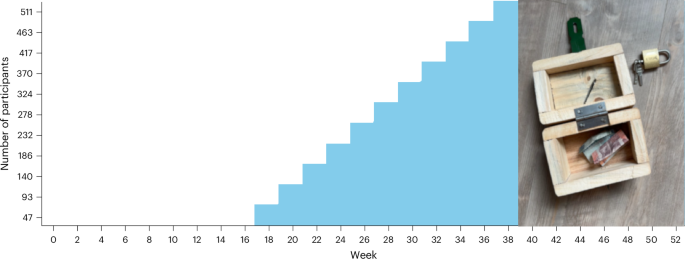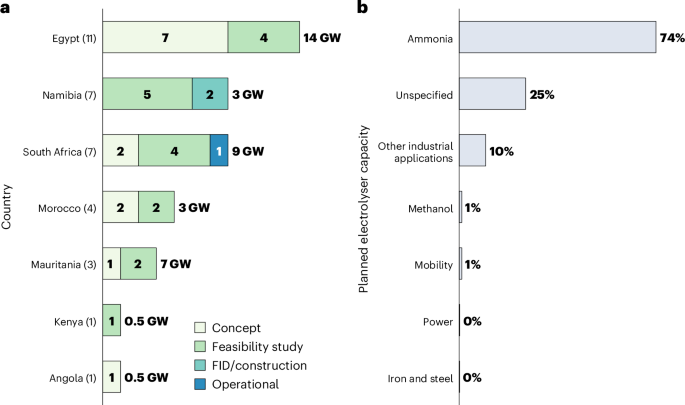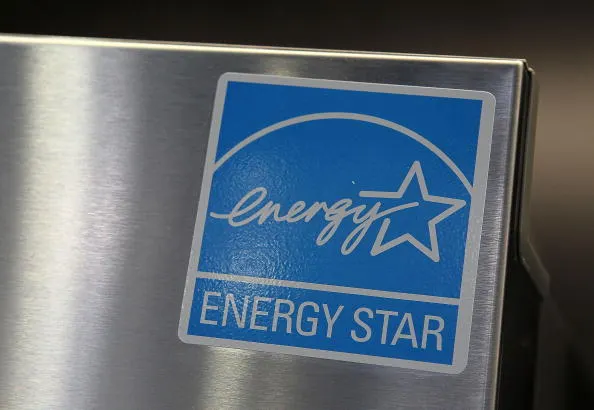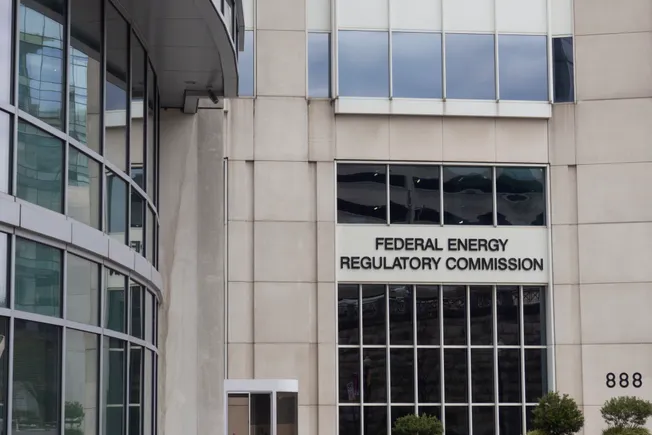Appeals court halts trade court’s tariff injunction: What it means for freight
Retaliatory tariffs from trading partners, like China’s response to the retaliatory tariffs, could linger, complicating cross-border freight. The post Appeals court halts trade court’s tariff injunction: What it means for freight appeared first on FreightWaves.

The views expressed here are solely those of the author and do not necessarily represent the views of FreightWaves or its affiliates.
In a seismic ruling on Wednesday, the United States Court of International Trade (CIT) delivered a stinging defeat to President Donald Trump’s aggressive tariff policies, striking down a series of import duties imposed under the International Emergency Economic Powers Act (IEEPA). The cases, V.O.S. Selections, Inc. v. United States and Oregon v. United States, challenged Trump’s Worldwide, Retaliatory and Trafficking Tariffs, which slapped duties as high as 25% on goods from Canada, Mexico and China, and 10% globally. The CIT’s decision, calling the tariffs an unconstitutional overreach, has sent shockwaves through the freight forwarding, trucking and logistics sectors. Here’s what happened, why it matters and what’s next for global trade.
The tariffs: A bold play with a shaky foundation
Since taking office in January, Trump has leaned heavily on tariffs to address trade deficits and drug trafficking, invoking IEEPA — a 1977 law granting presidents emergency economic powers — to bypass Congress. The Worldwide and Retaliatory Tariffs, rolled out via Executive Order 14257 in April, imposed a 10% duty on all imports, with higher rates (up to 50%) targeting 25 countries, including a tit-for-tat escalation with China peaking at 125% before settling at 20%. The Trafficking Tariffs, launched in February, hit Canada and Mexico with 25% duties and China with 20%, ostensibly to pressure those nations to curb drug trafficking.
These tariffs disrupted supply chains, jacked up costs for importers and sparked fears of retaliatory trade barriers. V.O.S. Selections, a group of small businesses, and a coalition of 12 states led by Oregon, argued the tariffs were an illegal power grab, violating IEEPA’s limits and Congress’ exclusive authority over commerce under Article I of the Constitution. The CIT agreed, handing plaintiffs a clean sweep on summary judgment.
The CIT’s smackdown: IEEPA isn’t a blank check
The CIT’s 49-page opinion, authored by a three-judge panel, dismantled the tariffs on two fronts. First, it ruled that the Worldwide and Retaliatory Tariffs, aimed at fixing trade deficits, fell under the Trade Act of 1974’s Section 122, which caps tariffs at 15% for 150 days to address balance-of-payments issues. Trump’s open-ended, globe-spanning duties blew past those limits, rendering them “ultra vires” (beyond legal authority). The court noted that IEEPA, while allowing the president to “regulate importation” during emergencies, doesn’t override specific trade laws like Section 122, especially after Congress tightened IEEPA in 1977 to curb executive overreach.
Second, the Trafficking Tariffs flunked IEEPA’s requirement that actions “deal with” an “unusual and extraordinary threat” (50 U.S.C. § 1701). The court found the tariffs, which blanket entire economies rather than targeting trafficking networks, were more about creating “leverage” than directly addressing the drug crisis. “Customs’s collection of tariffs on lawful imports does not evidently relate to foreign governments’ efforts ‘to arrest, seize, detain, or otherwise intercept’ bad actors,” the court wrote, rejecting the government’s argument that economic pressure alone satisfies IEEPA.
Crucially, the CIT rejected the government’s claim that the tariffs were immune from review under the political question doctrine. The court held that interpreting IEEPA’s statutory limits is a judicial task, not a blank check for the president. Citing Youngstown Sheet & Tube Co. v. Sawyer (1952), the court emphasized that executive actions incompatible with Congress’ will are at their “lowest ebb” of authority.
Freight fallout: Relief for importers, but uncertainty lingers
For freight forwarders, truckers and logistics providers, the ruling is a short-term win. The tariffs, which spiked costs for imported goods like Canadian potash, Mexican auto parts and Chinese electronics, strained cash flow for businesses like V.O.S. Selections, which reported reduced inventory and canceled orders. Genova Pipe, another plaintiff, faced higher raw material costs, while MicroKits warned it might shutter without relief. The CIT’s permanent injunction, effective immediately, halts these duties, easing pressure on supply chains already battered by a protracted freight recession.
But don’t pop the champagne yet. The ruling invites appeal to the Federal Circuit and eventually the Supreme Court, where the administration could argue for broader IEEPA powers. Trump’s trade team, led by U.S. Trade Representative Jamieson Greer, may also pivot to narrower tariff schemes under Section 301 or Section 232, which allow duties for unfair trade practices or national security threats but require rigorous investigations. Retaliatory tariffs from trading partners, like China’s response to the Retaliatory Tariffs, could linger, complicating cross-border freight.
What’s next for trade policy?
The CIT’s decision is a wake-up call for Trump’s trade agenda. By leaning on IEEPA, the administration sidestepped the procedural hurdles of trade statutes, betting on emergency powers to reshape global commerce. The court’s rebuke underscores that Congress, not the president, holds the reins on tariffs — a principle rooted in the Constitution’s commerce clause.
For shippers, the ruling means lower import costs for now, but vigilance is key. Canada and Mexico, vital U.S. trade partners under the United States-Mexico-Canada Agreement, may push for exemptions or trade concessions, impacting trucking routes and border wait times. China’s role as a manufacturing hub ensures its goods will remain a flashpoint, with or without tariffs. Freight forwarders should brace for volatility as the administration recalibrates.
Longer term, the case could prompt Congress to tighten IEEPA further, echoing post-Watergate reforms that curbed executive power. Until then, the freight industry must navigate a trade landscape where legal battles are as critical as load boards. As one plaintiff, Terry Cycling, put it, these tariffs cost them $25,000 in unplanned duties this year alone. For an industry running on thin margins, that’s a hit nobody can afford.
But Wait, There’s More: A Look at the Appeal
On May 29, 2025, the United States Court of Appeals for the Federal Circuit issued a nonprecedential order consolidating two appeals from the United States Court of International Trade, where judgments were entered against the United States. The Federal Circuit granted the United States’ motion to consolidate the appeals, requiring a single set of briefs, and issued a temporary administrative stay of the Court of International Trade’s judgments and injunctions pending further consideration of the United States’ stay motions. Looks like tariffs are back on the menu. The plaintiffs were directed to respond to the stay motions by June 5, 2025, with the United States permitted to file a consolidated reply by June 9, 2025, and the parties were instructed to inform the court of any actions taken by the Court of International Trade regarding the pending stay motions.
Make no mistake, the outcome of this case will be decided before the Supreme Court of the United States. This is a (quickly) developing case.

Matthew Leffler is a trucking industry expert and an adjunct professor of law at Michigan State University College of Law. He can be reached at matthew@armchairattorney.com.
TQL faces federal lawsuit over broker transparency dispute
The courts are unlikely to end the trade war
Court blocks Trump’s ‘Liberation Day’ tariffs, calls them unconstitutional
The post Appeals court halts trade court’s tariff injunction: What it means for freight appeared first on FreightWaves.






















































































































































